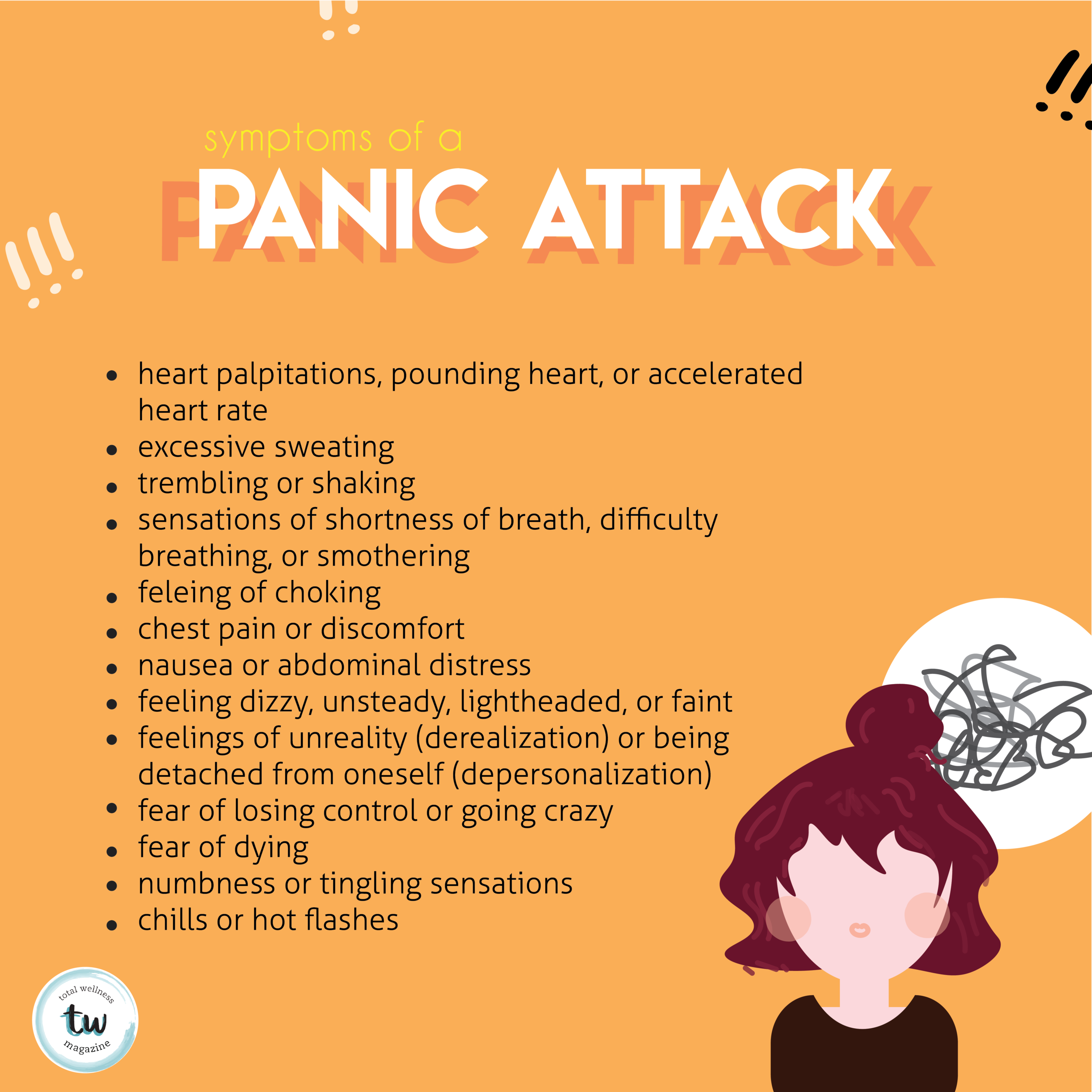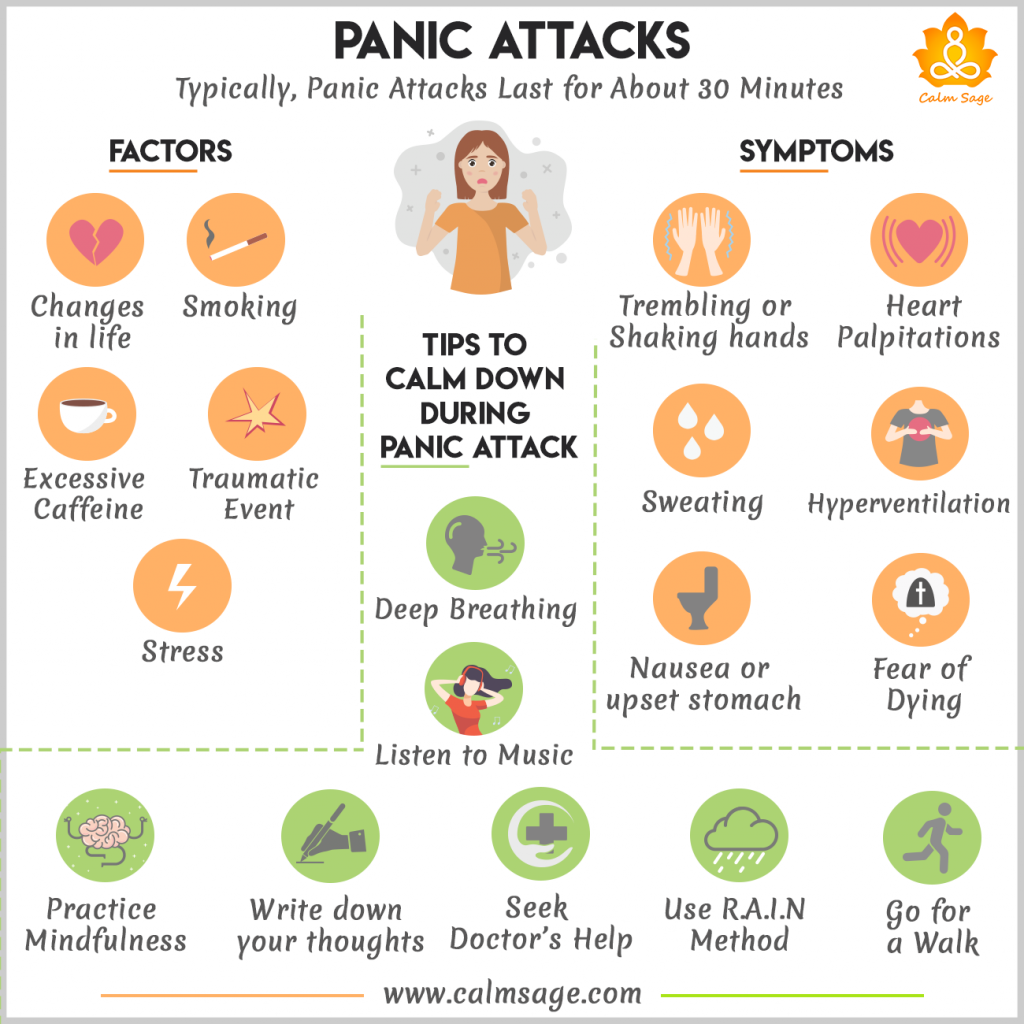Make sure each breath takes 15 seconds 5 seconds in 3 seconds holding 7 seconds out. It can come on very quickly and for no apparent reason.
 Helping Someone Through Panic Attacks And Anxiety Total Wellness
Helping Someone Through Panic Attacks And Anxiety Total Wellness
During a panic attack you get a rush of intense mental and physical symptoms.

Severe panic attack symptoms. This type of breathing can make feelings of anxiety and. This can cause severe chest pain. Work on Breathing The absolute worst panic attack symptoms appear to come from hyperventilation.
People who experience this struggle from an over-exaggerated experience of. Panic attacks are sudden episodes of intense fear accompanied by a set of physical symptoms such as rapid heartbeat or shortness of breath. Panic is the most severe form of anxiety.
People also experience weakness that can lead to fainting as well as severe nausea. A person experiencing a panic attack may believe that he or she is having a heart attack or that death is imminent. Panic attacks can also have physical symptoms including shaking feeling disorientated nausea rapid irregular heartbeats dry mouth breathlessness sweating and dizziness.
The data collected showed subtle changes in breathing and other physiological instabilities such as hyperventilating prior to the onset of the panic attack but the patients were unaware of these changes. Learning to slow your breathing can reduce the severity of the attack. Panic attacks can cause rapid breathing and chest tightness can make the breaths shallow.
What To Do During The Panic Attack Severe panic attacks can be disorienting. It may last a few minutes or hours and often starts without any warning signs. An obvious symptom of a panic attack and one of the most important in our list of 7 warning signs and symptoms of severe panic attacks is a feeling of impending doom or terror.
There are a wide range of distressing symptoms associated with panic attacks including a fast heart rate nausea and even chest pain that can feel like a heart attack. Often during panic attacks people breathe too quickly and too often because they feel as though they cannot get enough oxygen in. Chest Pain or Discomfort.
You may start to avoid certain situations because you fear theyll trigger another attack. Panic attacks are typically experienced through a combination of frightening physical sensations and distressing thoughts and emotions. Physical symptoms of severe anxiety are common in panic attacks and include.
Panic attacks are sudden feelings of terror that strike without warning. Learn more about symptoms and signs of panic attacks. Now I dont mean a pounding heart after you just finished going for a jog.
Panic attacks typically last up to 10 minutes before the symptoms decline. This can create a cycle of living in fear of fear. The one most easy to identify for someone actually suffering from an attack is an increase in heart rhythm known as a heart palpitation.
A Pounding Heart Or Chest Palpitations. It can add to your sense of panic and may cause you to have more attacks. These attacks bring on severe apprehension and discomfort despite a lack of actual threat or danger.
The deep fear and anxiety of a person is reinforced by severe physical symptoms of anxiety. Palpitations pounding heart or accelerated heart rate. If you havent already take some time to familiarize yourself with the early signs of a potential panic attack.
Panic attacks commonly begin with. The symptoms of a panic attack are not dangerous but can be very frightening. It is not uncommon to feel residual effects after the attack such as tightness in your chest stomachaches or headaches.
A panic attack is an episode of acute fear discomfort and anxiety that generally peaks within minutes but can last longer. These episodes can occur at any time even during sleep. This extreme fear is typically accompanied by rapid heartbeat sweating shaking shortness of breath.
If you just start suddenly sweating and. Panic attacks produce an intense overwhelming sensation of fear that can be debilitating. Again not after intense exercise or when the room is really hot.
The physical symptoms of anxiety and a panic attack can be very uncomfortable. A panic attack can occur without the presence of real factors that could contribute to fear. The physical symptoms of severe panic attacks are hard to miss.
One of the symptoms that most resembles an illness is panic attack nausea and while not everyone with panic attacks will become nauseated those that do often fear that they may be suffering from something worse.